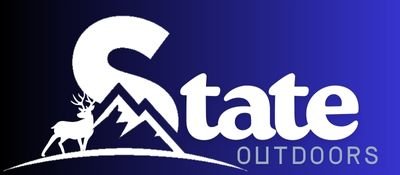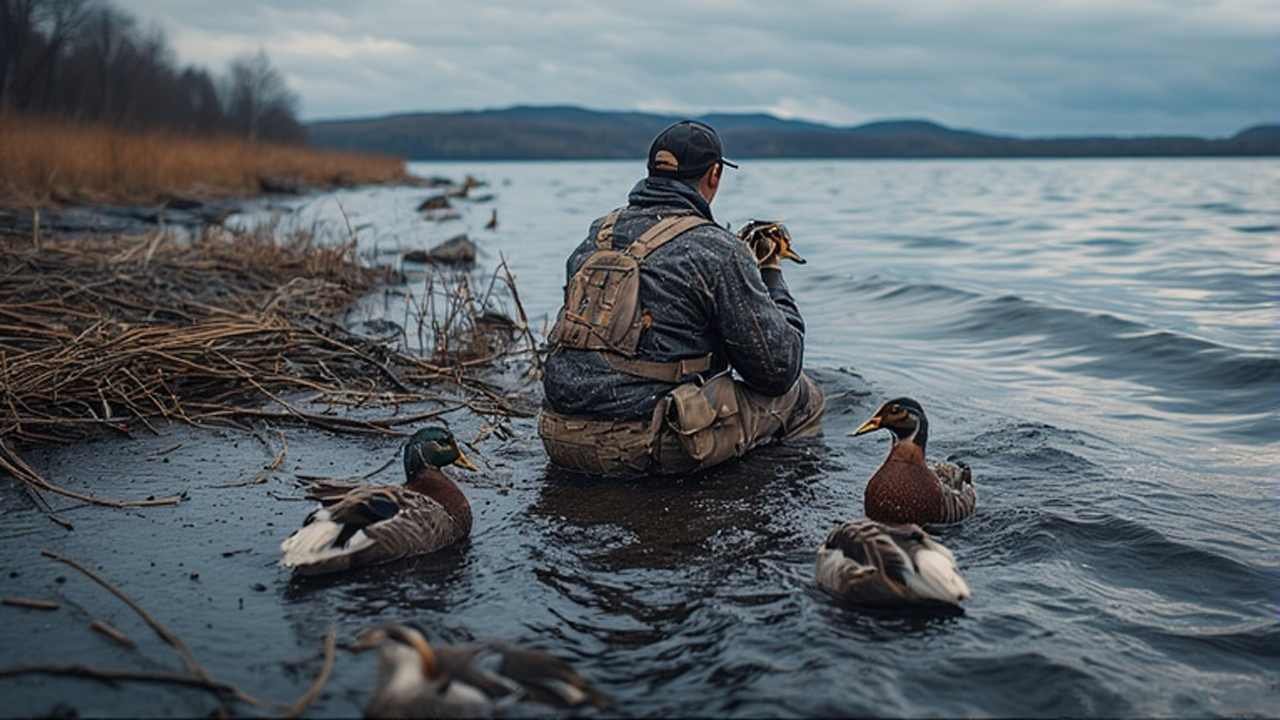Vermont Hunting Seasons 2025-2026 – Dates, Licenses & Game Management Areas
Welcome to your complete guide for Vermont’s game calendar covering the 2025-2026 schedule! Whether you’re a longtime Green Mountain State resident or planning your first visit to pursue Vermont’s diverse wildlife, this comprehensive overview covers everything you need to know about dates, permits, bag limits, and prime locations.
Vermont offers some of New England’s finest outdoor opportunities, from challenging whitetail deer in dense hardwood forests to pursuing trophy black bears in remote wilderness areas. Our state’s varied terrain provides excellent habitat for everything from spring gobblers to migrating waterfowl along Lake Champlain.
Before heading afield, always double-check the latest regulations on Vermont Fish & Wildlife Department’s official website, as wildlife management decisions can change based on population surveys and environmental conditions.
📅 Quick Highlights
Here are the essential dates every outdoor enthusiast should mark on their calendar for the upcoming year:
Major Game Species at a Glance:
- Whitetail Deer: Youth Weekend (Oct 25-26), Regular Season (Nov 15-30), Archery splits around rifle dates
- Wild Turkey: Spring season runs May 1-31, Fall opportunities from October through early November
- Black Bear: Extended early season Sept 1-Nov 14, late season Nov 15-23
- Waterfowl: Duck and goose schedules vary by zone, generally October through December
- Small Game: Most species open late September through December/January
Youth Opportunities:
Vermont prioritizes getting young people involved in outdoor traditions. Youth and novice hunters get special weekend opportunities for deer (Oct 25-26) and turkey (April 26-27), plus extended waterfowl access during youth weekend (Sept 27-28).
Big Game Overview
Vermont’s big game opportunities center around three primary species that draw sportsmen from across the Northeast.
White-tailed Deer
| Season Type | Dates | Notes |
|---|---|---|
| Archery | Oct 1-Nov 14 & Dec 1-15 | Closed during regular rifle season |
| Youth & Novice Weekend | Oct 25-26 | Special opportunity for new hunters |
| Muzzleloader Antlerless | Oct 30-Nov 2 | Permit required, select WMUs only |
| Regular Season | Nov 15-30 | 16-day statewide season |
| Muzzleloader | Dec 6-14 | Both antlered and antlerless |
Important Notes:
- Antlerless permits distributed through lottery system
- Different WMUs have varying antler restrictions
- Some units allow spike horn harvest, others require 3+ inch antlers
Black Bear
| Season Type | Dates | Weapon Restrictions |
|---|---|---|
| Early Season | Sept 1-Nov 14 | All legal methods |
| Late Season | Nov 15-23 | All legal methods |
Bear tag costs just $5 for residents ($15 non-residents) in addition to base license. Vermont’s bear population remains healthy, providing good opportunities throughout forested regions.
Moose
Check Vermont Fish & Wildlife website for current moose lottery information. Moose permits are extremely limited and awarded through special drawing.
Turkey Dates
Vermont’s turkey population has rebounded dramatically over recent decades, now providing excellent opportunities across most of the state.
Spring Turkey Season
| Category | Dates | Weapon Types |
|---|---|---|
| Youth & Novice Weekend | April 26-27 | Shotgun or archery |
| Regular Spring Season | May 1-31 | Shotgun or archery |
Fall Turkey Seasons
| Area | Method | Dates |
|---|---|---|
| Statewide | Archery Only | Oct 4-24 |
| WMUs B,D,G,H,I,J,L,M,O,P,Q | Shotgun or Archery | Oct 25-Nov 2 |
| WMUs F,K,N | Shotgun or Archery | Oct 25-Nov 9 |
Bag Limits: One bearded bird per day during spring season. Fall season allows harvest of either sex.
Furbearer Opportunities
Hunting Seasons
| Species | Season Dates | Special Notes |
|---|---|---|
| Bobcat | Jan 10-Feb 7 | Limited season |
| Red & Gray Fox | Oct 25, 2025-Feb 8, 2026 | Extended season |
| Raccoon | Oct 11-Dec 31 | Night hunting allowed |
| Coyote | Year-round | Check website for updates |
| Skunk, Weasel, Opossum | Year-round | No closed season |
Trapping Seasons
| Species | Trapping Dates | License Required |
|---|---|---|
| Mink, Fox, Raccoon, Coyote | Oct 25-Dec 31 | Trapping license |
| Otter, Muskrat, Beaver | Oct 25, 2025-March 31, 2026 | Trapping license |
| Fisher | Dec 1-31 | Trapping license |
| Bobcat | Dec 1-16 | Trapping license |
Note: Several species including marten, lynx, wolf, and eastern mountain lion have no open season and are protected.
Small Game Section
| Species | Season Dates | Daily Bag Limit |
|---|---|---|
| Ruffed Grouse (Partridge) | Sept 27-Dec 31 | 4 birds |
| Gray Squirrel | Sept 1-Dec 31 | 6 squirrels |
| Hare, Rabbit | Sept 27, 2025-March 8, 2026 | 4 (WMUs D,E open through March 31) |
| Woodcock | Sept 27-Nov 10 | 3 birds |
| Crow | Jan 17-April 11 & Aug 22-Dec 19 | No limit (Friday-Monday only) |
Small game provides excellent training opportunities for new hunters and exciting action throughout autumn months. Grouse and woodcock offer particular challenges in Vermont’s thick cover.
Complete Waterfowl Seasons
Vermont’s waterfowl opportunities are managed in three distinct zones, each with different dates and bag limits.
Duck Seasons by Zone
| Zone | Season Dates | Notes |
|---|---|---|
| Lake Champlain | Oct 11-Nov 2 & Nov 22-Dec 28 | Split season |
| Interior Vermont | Oct 11-Dec 9 | Straight season |
| Connecticut River | Oct 13-Dec 6 | Coordinated with New Hampshire |
Canada Goose Seasons
| Season | Zones | Dates | Daily Bag |
|---|---|---|---|
| Early Resident | Statewide | Sept 1-25 | 5 (Conn. River), 8 (elsewhere) |
| Regular | Lake Champlain/Interior | Oct 11-Nov 9 | 1 goose |
| Regular | Connecticut River | Oct 13-Nov 11 & Nov 27-Dec 26 | 2 geese |
| Late Season | All Zones | Dec 1-Jan 19 (varies by zone) | 5 geese |
Special Considerations
Youth Waterfowl Weekend: Sept 27-28 for hunters 17 and under (15 and under in Connecticut River Zone)
Required Stamps:
- Federal Duck Stamp (ages 16+)
- Vermont Migratory Waterfowl Tag
- H.I.P. registration number
Scaup Limits: Vary by zone and date – generally 1 bird early season, 2 birds later
Other Available Game
| Species | Season | Bag Limit | Special Notes |
|---|---|---|---|
| Woodcock | Sept 27-Nov 10 | 3 birds | Federal regulations apply |
| Mourning Dove | Check federal dates | Varies | Limited Vermont opportunities |
| Wilson’s Snipe | Check waterfowl syllabus | 8 birds | Wetland species |
Vermont follows federal frameworks for all migratory bird species. Always consult the current Migratory Bird Syllabus for complete regulations.
Wildlife Management Areas
Vermont divides the state into Wildlife Management Units (WMUs) labeled with letters and numbers (A through Q, with some subdivisions). These units help manage harvest and determine specific regulations for different areas.
Key WMU Information:
- Some units have antler restrictions (3+ inch requirement)
- Certain WMUs allow spike horn harvest
- Antlerless permit availability varies by unit
- Turkey seasons differ between WMUs
Finding Your WMU:
Download the official WMU map from Vermont Fish & Wildlife Department’s website. The map shows unit boundaries marked by highways and geographic features.
Public Land Access:
Vermont manages over 100 Wildlife Management Areas totaling 133,000+ acres. All WMAs allow regulated outdoor activities including target practice, trapping, and angling. These areas provide excellent access for hunters without private land connections.
For those interested in comparing regulations across state lines, outdoor enthusiasts might also want to review New Hampshire’s guidelines which often coordinate with Vermont’s Connecticut River Zone regulations.
Permits, Tags & Licenses
Resident License Fees
| License Type | 1-Year | 5-Year |
|---|---|---|
| Basic License | $28.00 | $134.00 |
| Youth (17 & under) | $8.00 | N/A |
| Combination Hunt/Fish | $47.00 | $229.00 |
| Mentored Program | $10.00 | N/A |
| Permanent (66+) | $60.00 | N/A |
Add-On Tags (Resident)
| Tag Type | Cost | Requirements |
|---|---|---|
| Archery Deer | $23.00 | Base license required |
| Turkey | $23.00 | Base license required |
| Muzzleloader Deer | $23.00 | Base license required |
| Bear | $5.00 | Base license required |
| Trapping | $23.00 | Separate license |
Non-Resident License Fees
| License Type | 1-Year | 5-Year |
|---|---|---|
| Basic License | $102.00 | $504.00 |
| Youth (17 & under) | $25.00 | N/A |
| Small Game Only | $50.00 | N/A |
| Archery Only Deer | $75.00 | No base license needed |
Non-Resident Add-Ons
| Tag Type | Cost |
|---|---|
| Archery Deer | $38.00 |
| Turkey | $38.00 |
| Muzzleloader Deer | $40.00 |
| Bear | $15.00 |
Special Programs:
- Military discounts available for active duty personnel
- Disabled veteran benefits through special applications
- Mentored program allows unlicensed individuals to participate under supervision
Vermont Game Calendar Quick FAQ
Q: Can I use a crossbow during archery season?
A: Vermont allows crossbow use during all archery seasons without special permits. Crossbows are considered archery equipment under state regulations.
Q: Do I need orange clothing requirements?
A: Yes, 200 square inches of fluorescent orange must be worn above the waist during all big game rifle seasons. This includes deer, bear, and turkey seasons when firearms are legal.
Q: Can non-residents hunt on Sunday?
A: Vermont prohibits all wildlife pursuit on Sundays statewide. This applies to residents and non-residents equally.
Q: What’s the difference between WMUs for deer regulations?
A: Some WMUs require 3+ inch antlers for legal bucks, while others allow spike horn harvest. Units C, D1, D2, E1, E2, G, I, L, M, P, and Q permit spike horn harvest.
Q: Do I need landowner permission on private property?
A: Absolutely. Vermont requires written permission from landowners to hunt private property. Trespassing laws are strictly enforced.
Q: Can I hunt with a handgun?
A: Handguns are legal wherever rifles may be used. They must meet minimum caliber requirements for specific game species.
Q: How do antlerless permits work?
A: Antlerless deer permits are distributed through lottery system. Applications typically open in summer, with drawings held before season. Not all WMUs receive permits each year.
Additional Resources
For the most current information, always consult these official sources:
- Vermont Fish & Wildlife Department: Primary source for all regulations
- License Agents: Available throughout the state for purchase and information
- Federal Duck Stamp: Required for waterfowl – available at post offices and online
- H.I.P. Registration: Mandatory for all migratory bird hunters
- WMA Locator Tool: Interactive mapping for public land access
Stay connected with Vermont’s outdoor community through social media and local sportsmen’s organizations for real-time updates on conditions and opportunities.
Conclusion
Vermont’s 2025-2026 game calendar offers something for every outdoor enthusiast, from challenging whitetails in November snow to spring gobblers echoing through hardwood ridges. The state’s commitment to wildlife management ensures sustainable populations while providing quality opportunities.
Key reminders for a successful season:
- Purchase licenses and tags early to avoid disappointment
- Download WMU maps and identify your areas before opening day
- Check landowner permission requirements and respect private property
- Review safety regulations including orange clothing requirements
- Register for H.I.P. if pursuing migratory birds
Vermont’s outdoor traditions run deep, connecting us to the land and wildlife that make this state special. Whether you’re introducing someone new to the sport or adding another chapter to your own outdoor story, the Green Mountain State delivers memorable experiences.
Plan ahead, hunt safely, and enjoy everything Vermont’s diverse wildlife has to offer. Bookmark this guide for quick reference throughout the upcoming seasons, and remember that regulations can change based on wildlife population assessments.
Good luck afield!

